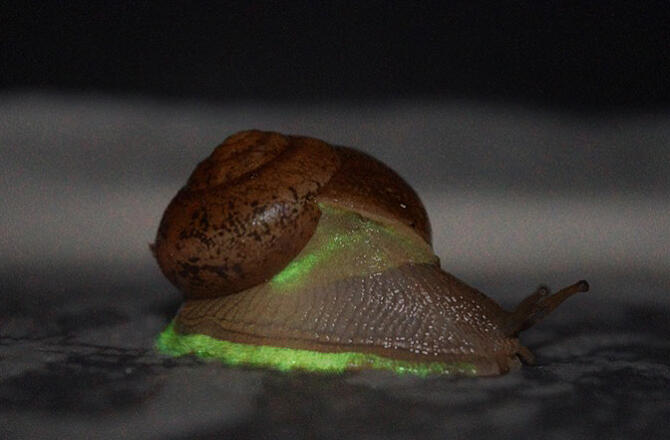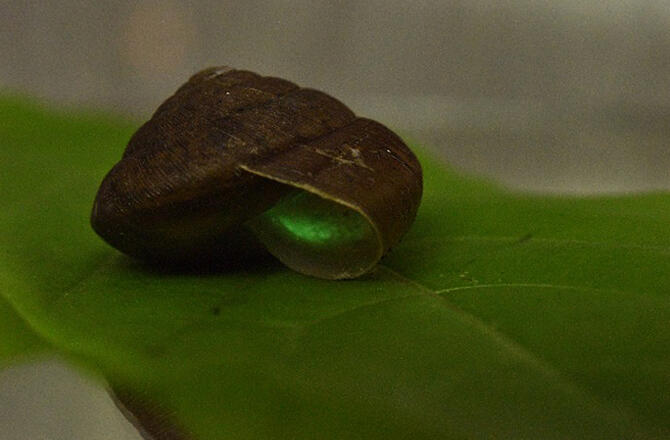There are approximately 30,000 known species of snails in the world, but it was long thought that the species Quantula striata (commonly known in Japan as Hikari-maimai) was the only one that emits light. The first person to discover Q. striata was Dr. Yata Haneda of Japan (former Director of Yokosuka City Museum), who found it during his stay in Singapore in 1943. Graduate student Gaku Mizuno and Professor Yuichi Oba of the Department of Environmental Biology at Chubu University, together with Dr. Arthit Pholyotha and Professor Somsak Panha of Chulalongkorn University in Thailand, and their colleagues, have collected snails from various locations in Thailand and discovered five species that were not previously known to emit light. The results were published in the electronic version of Scientific Reports.

Provided by Yuichi Oba, Chubu University
Of the five species found in this study, one is in the same genus Quantula as Q. striata. Morphological analysis showed that the species, named Q. weinkauffiana, is different from Q. striata. However, the bioluminescence of Q. weinkauffiana is similar to that of Q. striata, with the green light flashing near the mouth. The remaining four species, which were not previously known to be bioluminescent, are of the genus Phuphania (which has no Japanese name): P. crossei, P. globosa, P. carinata and P. costata.
The rhythmical blinking or flashing luminescence of these four species is different from that of Q. striata, which emits green light continuously from parts of its body (mantle and foot margin). The researchers also found that dormant individuals and eggs emit the same green light.
Although the reason snails emit light is unknown, Oba and his colleagues who discovered these snails believe that bioluminescence plays a role in predator avoidance. Some terrestrial (land) luminous organisms, such as fireflies, are known to have an unpleasant or poisonous taste. Luminescent snails may escape predation by mimicking these luminous organisms by emitting light. It is estimated that there are approximately 7,000 species of luminous organisms in the world, many of which are found in the deep sea. As deep-sea organisms are not well studied, it is common to find new luminous organisms in the deep sea.

Provided by Yuichi Oba, Chubu University
However, it is very rare to find new bioluminescent terrestrial organisms, and this suggests that many unknown organisms and their phenomena remain undiscovered in Thailand's natural environment, which has high biodiversity. Chubu University has an inter-university agreement with Chulalongkorn University and will continue to conduct biological research in Thailand.
Journal Information
Publication: Scientific Reports
Title: A new discovery of the bioluminescent terrestrial snail genus Phuphania (Gastropoda: Dyakiidae)
DOI: 10.1038/s41598-023-42364-y
This article has been translated by JST with permission from The Science News Ltd. (https://sci-news.co.jp/). Unauthorized reproduction of the article and photographs is prohibited.




